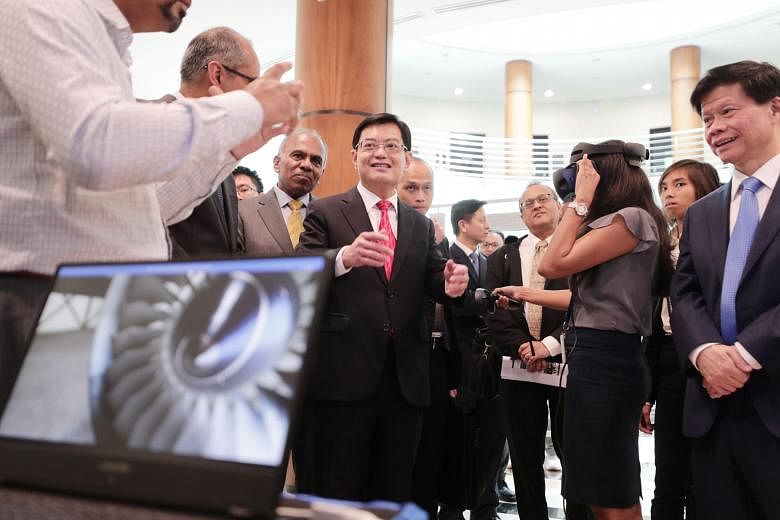As the global aviation sector continues to take off, innovations that will be developed here aim to make the industry both more efficient and environmentally sustainable.
These include the development of energy storage solutions for hybrid-electric aircraft which, coupled with the use of other technology, could cut aircraft carbon emissions by as much as 30 per cent, said Rolls-Royce central technology director David Smith yesterday.
He said prototypes of such aircraft will be in the air within a year, with the technology likely to become more commonplace within the next decade.
This is among 29 projects being developed as part of an $88 million second phase of a research partnership between the British engineering giant, the Nanyang Technological University (NTU) and the Government, which was launched yesterday.
This follows the establishment of a $75 million joint corporate laboratory between NTU and Rolls-Royce in 2013 - the first such facility under a National Research Foundation scheme and the largest of Rolls-Royce's 29 university technology centres worldwide.
The first phase, which saw 53 research projects in areas such as power electronics and data analytics, also saw the development of several technologies now being used by Rolls-Royce.
These include a virtual engine emulator which employs artificial intelligence to reduce the design time for large engines and turbines.
NTU's president, Professor Subra Suresh, said the five-year first phase not only produced research with practical applications for the industry, but also provided internships for 200 undergraduate and 40 PhD students.
According to the International Air Transport Association, total carbon emissions of the global aviation industry in 2017 was about 859 million tonnes or about 2 per cent of all carbon emissions worldwide.
Deputy Prime Minister Heng Swee Keat, who attended yesterday's event, said with air traffic volume expected to double to 8.2 billion passengers worldwide - with half of them being from the Asia-Pacific region - in the next two decades, the challenge will be to accommodate this growth in an environmentally sustainable way.
This is an example of the Republic's "commitment to focus on building for the long term" despite the current economic outlook, said Mr Heng, who is also the Finance Minister. "I am heartened that despite the uncertain and volatile economic outlook, there continues to be strong investments in research and innovation."
He noted that there are now 14 such corporate labs which - having received more than $800 million in joint investments and trained more than 1,000 researchers - have built a "strong pipeline of talent" to support tech-intensive companies.
Last week, it was announced that Rolls-Royce and the Agency for Science, Technology and Research were investing an additional $8 million in a joint lab, which was set up two years ago with Singapore Aero Engine Services, to develop smart manufacturing technologies.


